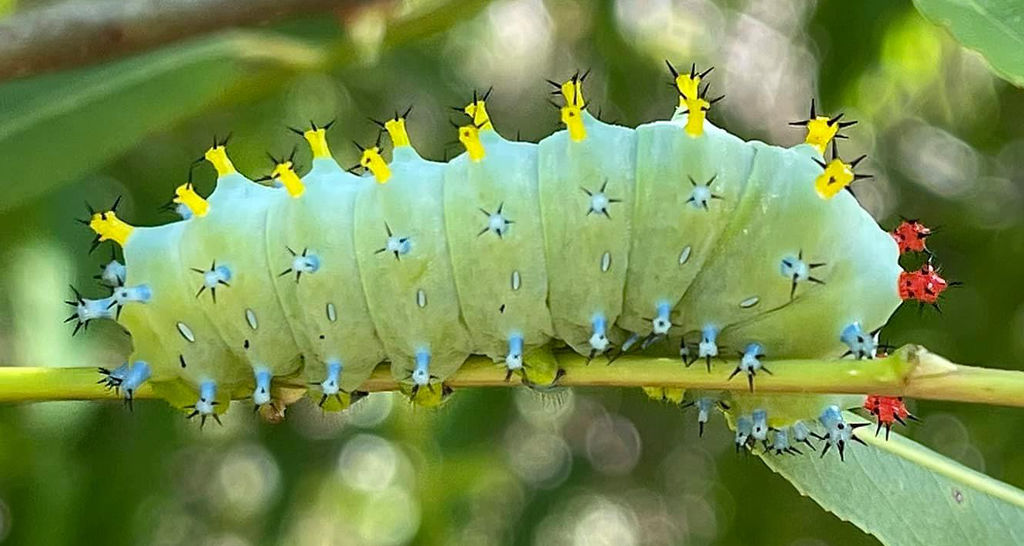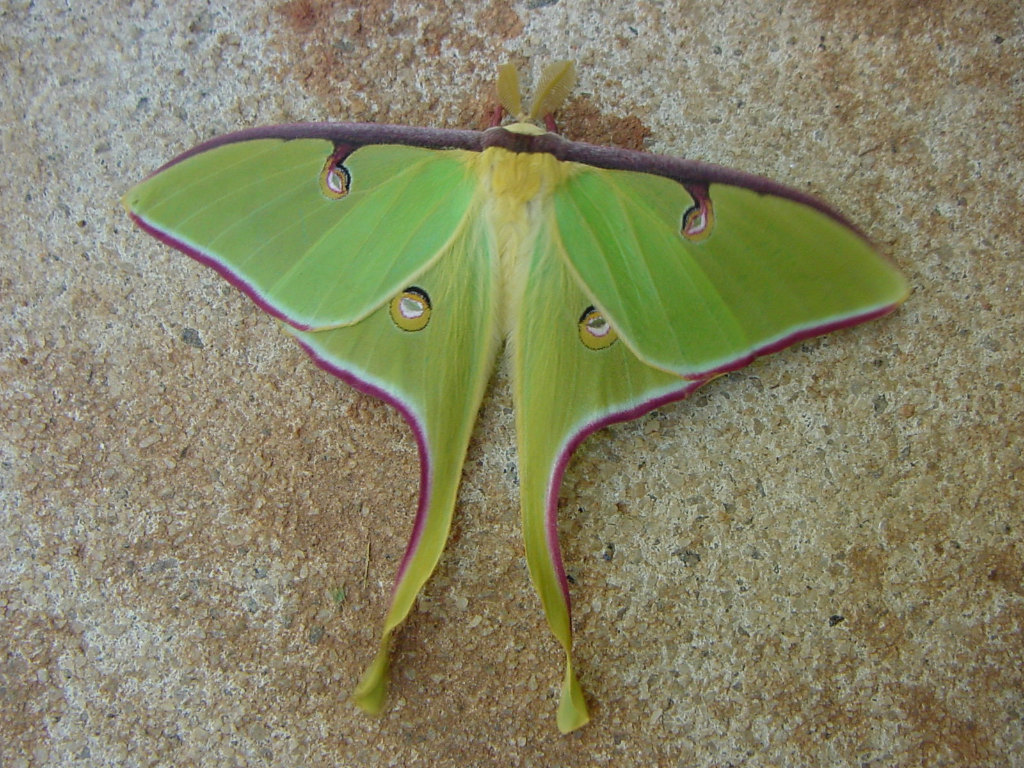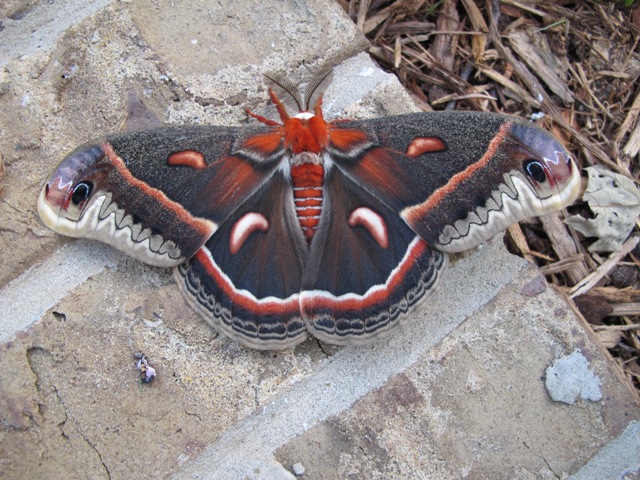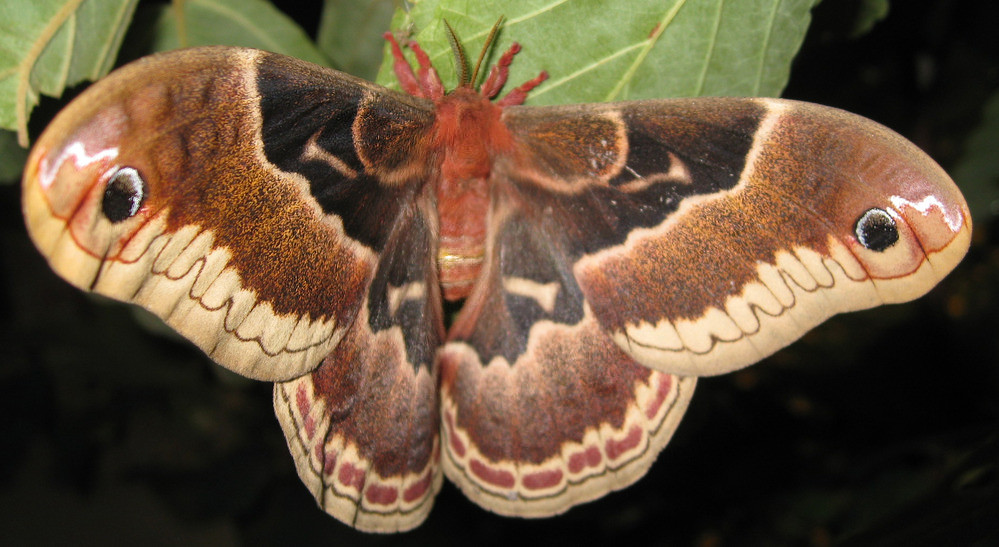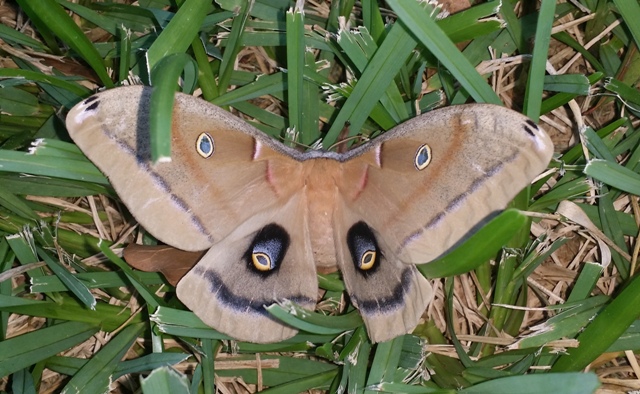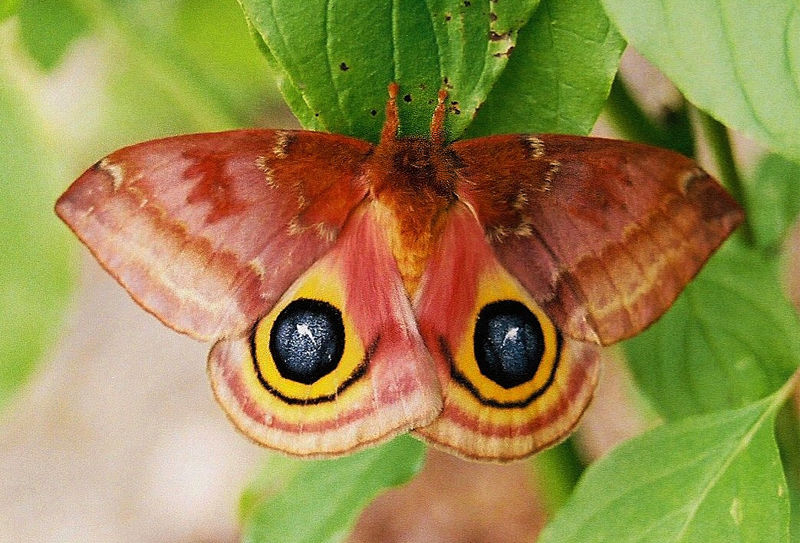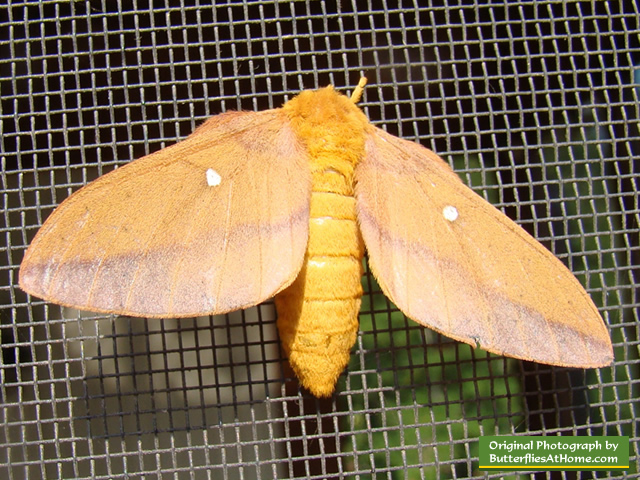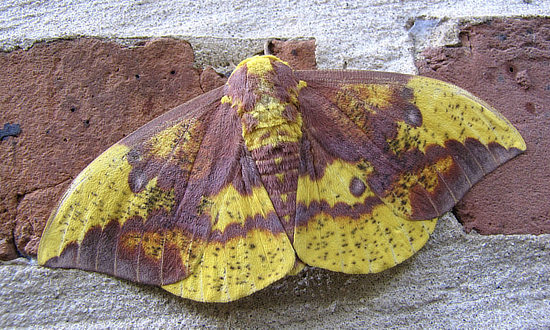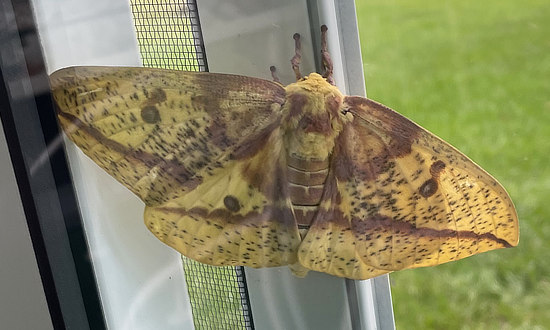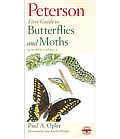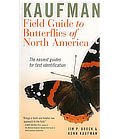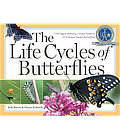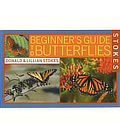Silk Moths
Giant silk moths (Family: Saturniidae, Subfamily: Saturniinae) draw their name from the fine silk they use to spin their cocoons which serve as protection for the pupal stage in their life cycle.
Their mouths are not fully formed, and do not eat during their short 5-12 day adult moth lifespan. Thus, silk moth caterpillars have to consume lots of vegetation, because they must stock up all the fat reserves the adult moth will need. Some exhibit realistic eye-like markings, and others have adapted the eyespots to form crescent moon or angular shapes or have lost their wing scales to create transparent windows.
Caterpillars feed on leaves of a wide variety of trees, including walnut, hickory, sweetgum, maple, oak, persimmon, willow and other trees.
When the moths emerge from their cocoons they live only long enough to mate and lay eggs, and then die.
Commercial silk is produced by the domesticated silk moth caterpillar, Bombyx mori.
Common silk moths found in North America  |
Common Silk Moths
Luna Moth (Actias luna) click for details |
||||||||||||
Cecropia Moth (Hyalophora cecropia) click for details |
||||||||||||
Promethea Moth (Callosamia promethea) click for details |
||||||||||||
Polyphemus Moth (Antheraea polyphemus) click for details |
||||||||||||
Io Moth (Automeris io) click for details |
||||||||||||
Spiny Oakworm Moth (Anisota stigma) click for details |
||||||||||||
Imperial Moth (Eacles imperialis) click for details
|
||||||||||||

